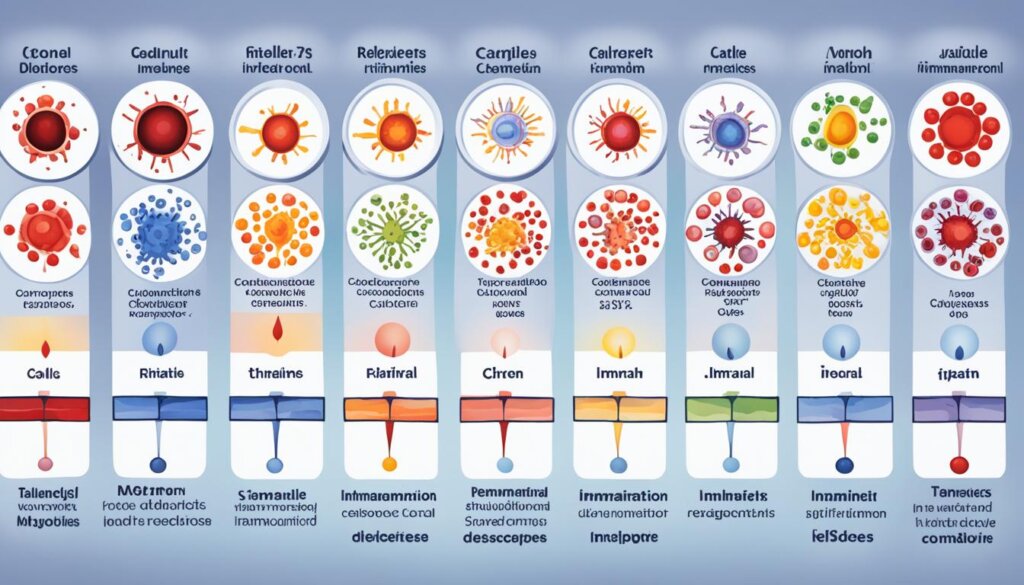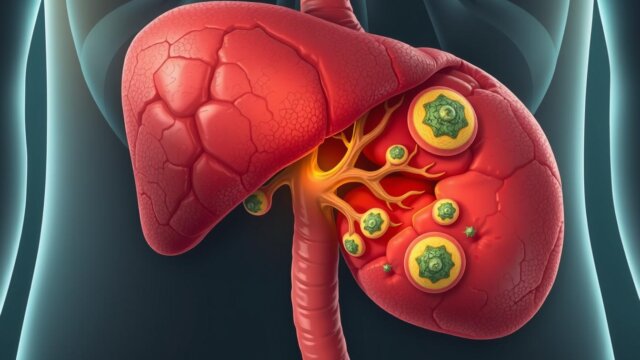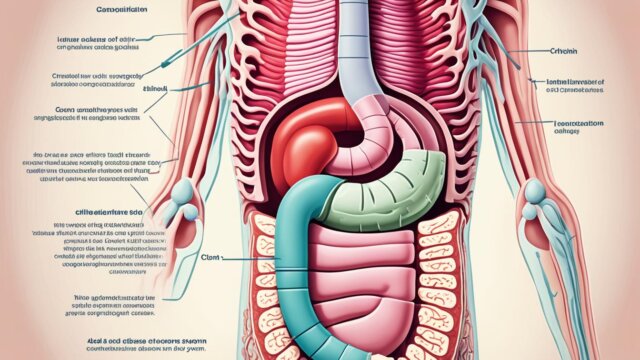FTC disclaimer: This post may contains affiliate links and we will be compensated if you click on a link and make a purchase.
A simple blood test can tell a lot about your body’s health. Inflammation is common in everyone, from top athletes to older adults. It’s key for heart health, healing from injuries, and fighting off sickness. Tests for inflammation markers like C-reactive protein (CRP) and white blood cell count (WBC) show what’s going on inside you.
Knowing about these markers is important for staying healthy. These tests help find diseases, track how they’re doing, and help choose treatments. This lets you take charge of your health.
Key Takeaways
- Inflammation is a vital part of the body’s immune response, affecting cardiovascular health, injury healing, and susceptibility to illness.
- Blood tests measuring inflammation markers like C-reactive protein (CRP) and white blood cell count (WBC) can provide valuable insights into your health.
- CRP levels below 1.0 mg/L indicate low risk for heart problems, while levels above 3.0 mg/L signify high risk.
- Regular exercise can reduce inflammation by 20-60% and lower white blood cell count.
- Understanding inflammation markers is key to maintaining overall health and wellness.
What is Inflammation?
Inflammation is how the body protects itself from harm. This includes things like damaged cells, irritants, or pathogens. It starts an immune response to get rid of the harm and start healing. Inflammation is key to keeping us healthy and fighting off sickness.
Inflammation and the Immune System
When the body finds a threat, it fights back with inflammation. This means sending out markers and cells to attack the problem. But, if inflammation goes on too long, it can cause serious health issues like autoimmune diseases and cancer.
Difference Between Inflammation and Infection
Inflammation and infection are not the same thing. Inflammation is the body’s defense against harm. An infection is when something like bacteria or viruses invades the body. Sometimes, inflammation happens without an infection, and sometimes an infection can cause inflammation. Knowing the difference helps doctors treat you right.
“Inflammation is a complex biological response of the body’s immune system to various harmful stimuli, such as pathogens, damaged cells, or irritants.” – World Health Organization
Inflammation | Infection |
|---|---|
Body’s protective response to harmful stimuli | Invasion of the body by pathogens (bacteria, viruses, fungi) |
Triggers an immune response to remove offending agents and initiate healing | Causes the body to become sick or diseased |
Can occur without an infection | Can trigger an inflammatory response |
In short, inflammation is a key part of our immune system. It helps protect us and start healing. While it’s related to infection, knowing the differences is important for getting the right treatment.
Key Inflammation Markers
Checking inflammation markers in blood is key to knowing the body’s inflammation level. CRP and WBC are two main markers that show how the body fights inflammation.
C-Reactive Protein (CRP)
CRP is a protein made by the liver when there’s inflammation. It shows the body’s inflammation level. High-sensitivity CRP (hsCRP) is used to find low-grade inflammation. This is linked to a higher risk of heart disease and other long-term health issues.
White Blood Cell Count (WBC)
WBCs are key to fighting infections. A high WBC count means there might be an infection or inflammation. Testing for inflammation markers like WBC is now common in doctor’s offices. Watching WBC levels helps track inflammation and its changes.
Inflammation Marker | Normal Range | Significance |
|---|---|---|
C-Reactive Protein (CRP) | Shows overall inflammation; high levels mean active inflammation | |
White Blood Cell Count (WBC) | 4,500-11,000 cells/μL | Shows the immune response; high levels suggest infection or inflammation |
By watching these key markers, doctors can understand the body’s inflammation better. This helps them make better treatment plans.
Testing Inflammation Markers
Blood tests help us understand how much inflammation your body has. They look at things like CRP, WBC count, ESR, PCT, and PV. These tests tell us about your health and disease risks.
The CRP test is a key tool for checking inflammation. People with good health usually have low CRP levels. But high levels mean there’s inflammation somewhere in your body. This test can’t say what’s causing the inflammation, but it helps track your health and treatment progress.
Inflammation Marker | What it Measures | Significance |
|---|---|---|
C-Reactive Protein (CRP) | Levels of this protein in the blood, which rise in response to inflammation. | Elevated CRP levels indicate the presence of inflammation and can be a risk factor for heart disease and other conditions. |
White Blood Cell (WBC) Count | The number of white blood cells in the blood, which increase during inflammation and infection. | An elevated WBC count can signify the presence of inflammation or infection in the body. |
Erythrocyte Sedimentation Rate (ESR) | The rate at which red blood cells (erythrocytes) settle to the bottom of a test tube. | A higher ESR indicates the presence of inflammation, which can be a sign of underlying health issues. |
Procalcitonin (PCT) | Levels of this protein, which can increase in response to bacterial infections. | Elevated PCT levels can help distinguish between bacterial and viral infections, aiding in treatment decisions. |
Plasma Viscosity (PV) | The thickness or resistance to flow of the liquid portion of the blood (plasma). | Increased PV can be a sign of inflammation and is associated with an increased risk of cardiovascular events. |
These tests are easy to do and give us important info about inflammation. It’s key to talk with your doctor to understand the results. Many things can change these levels.
Knowing about your inflammation markers helps you understand your health risks. It lets you check if treatments are working and make smart health choices. Working with your doctor and testing regularly helps you manage inflammation and stay healthy.
Interpreting Inflammation Marker Results
It’s key to know what inflammation markers like CRP and WBC count mean. These markers help spot health issues early and guide treatment. They have normal ranges that show how likely someone might face health problems.
CRP Level Interpretations
CRP shows how much inflammation is in your body. Levels below 1.0 mg/L mean you’re at low risk, 1.0-3.0 mg/L is average, and above 3.0 mg/L is high risk. CRP can jump up a lot when you’re fighting an infection, going up 100- to 1000-fold. Knowing CRP levels helps understand your health and inflammation level.
WBC Count Interpretations
The WBC count is also key for checking inflammation. A count over 10,500 is high, and for adults, it should be 4,500-10,500. High counts might mean you have an infection or inflammation. Low counts could mean your immune system is weak. Looking at WBC counts with other markers helps doctors make good choices for your care.
Understanding CRP and WBC counts helps you know your inflammation level. This lets you work with your doctor to fix any health issues.

Inflammation Markers and Disease Risk
High levels of inflammation markers like C-reactive protein (CRP) and White Blood Cell (WBC) count are linked to more health problems. These include heart disease, diabetes, cancer, and autoimmune disorders. Keeping an eye on these markers helps people understand their health and risk of disease. This lets them make changes to lower these risks.
Research shows that higher levels of inflammation are linked to a greater chance of heart problems. People with high inflammation were more likely to have heart issues than those with lower levels. This shows why tracking inflammation is key to understanding heart disease risk.
High-sensitivity CRP is a strong sign of heart disease risk. If CRP levels are over 3 mg/L, it means a higher risk of heart problems. Smoking, being overweight, and insulin resistance can also raise CRP and fibrinogen levels, making disease risk even higher.
High inflammation markers also mean a higher chance of getting type 2 diabetes. Finding and lowering high inflammation can help reduce disease risk and improve health over time.
In conclusion, watching CRP and WBC levels is crucial for understanding disease risk. Knowing how high inflammation can lead to chronic conditions helps people make better health choices. This can lead to better health and well-being.
Monitoring Disease Activity with Inflammation Markers
Inflammation markers help find inflammation and track disease activity and progress. They look at CRP, WBC count, ESR, PCT, and PV levels. These levels show if a condition is getting better or worse.
For rheumatoid arthritis patients, these markers help doctors check disease activity and plan treatment. In polymyalgia rheumatica, CRP and ESR levels show if the condition is controlled or needs more treatment.
These markers are also key in tracking pneumonia and sepsis. High CRP, PCT, and IL-6 levels mean a bacterial infection. Watching these levels helps doctors see if treatment is working.
By watching inflammation markers, doctors can better manage diseases and adjust treatments for the best patient outcomes.

“Tracking inflammation markers over time can provide valuable insights into the progression of certain diseases and the effectiveness of treatment.”
Lifestyle Factors Affecting Inflammation Markers
Your choices in life can change how much inflammation is in your body. Diet and exercise are two big factors.
Diet and Inflammation
What you eat can make inflammation better or worse. Eating foods like fruits, veggies, whole grains, and healthy fats can lower inflammation markers. But, eating too much junk food can make inflammation go up.
Exercise and Inflammation
Working out can help lower inflammation. Studies say it can cut inflammation markers by 20-60%. But, too much or not enough exercise can make inflammation worse.
The National Health and Nutrition Examination Survey found that being active is good for your health. It lowers CRP and other inflammation markers.
Adding a good diet and regular exercise to your life can help control inflammation. This supports your overall health.
“A healthy lifestyle, including a balanced diet and regular exercise, is key to maintaining optimal inflammation levels and reducing the risk of chronic diseases.”
Inflammation Markers
Inflammation markers like C-Reactive Protein (CRP), White Blood Cell (WBC) count, Erythrocyte Sedimentation Rate (ESR), Procalcitonin (PCT), and Platelet Volume are key blood tests. They show how much inflammation is happening in the body. These tests help doctors figure out if someone has inflammation and how bad it is. Knowing about these markers is key for staying healthy.
Markers like the Systemic Immune-Inflammation Index (SII) and Neutrophil-to-Lymphocyte Ratio (NLR) are linked to a higher risk of high blood pressure. People with the highest SII and NLR levels were more likely to have high blood pressure. But, the Platelet-to-Lymphocyte Ratio (PLR) and Lymphocyte-to-Monocyte Ratio (LMR) were linked to lower high blood pressure rates.
It’s key to remember that inflammation markers aren’t specific and shouldn’t be the only way to check for serious diseases. If inflammation markers are really high, like an ESR over 100 mm/h, more tests might be needed. These markers are mainly used to spot inflammation and see if treatments are working.

Understanding inflammation markers helps people take care of their health. By watching these markers and making healthy choices, like eating right and exercising, you can lower inflammation risks.
Reducing Inflammation through Supplements
When diet and exercise don’t cut it, supplements can help manage inflammation. Some vitamins, minerals, and plants have anti-inflammatory effects. They can lower inflammation markers like C-reactive protein (CRP) and boost health.
Omega-3 fatty acids in fatty fish like salmon or tuna are great for fighting inflammation. Curcumin from turmeric can reduce inflammation in arthritis and psoriasis. It might work as well as or better than some painkillers. S-adenosylmethionine (SAM-e) can ease pain and inflammation in arthritis, maybe as good as some painkillers.
Zinc is a strong anti-inflammatory that boosts the immune system. Taking it can cut infections by about 66% in older people. Green tea might slow down cartilage loss and reduce inflammation. But, it could also lower folic acid and iron levels. Boswellia serrata (frankincense) can lessen inflammation and pain, possibly helping with osteoarthritis in just a week.
Capsaicin from hot peppers can lessen substance P, reducing pain in nerves and muscles. Cat’s claw may also reduce inflammation and block TNF-alpha, a chemical that causes inflammation. Anti-inflammatory supplements can take time to work. But, they offer a broad approach to fighting inflammation when paired with healthy living.
For quick pain relief, you can try over-the-counter drugs like ibuprofen, naproxen, and aspirin. Or, you can get a prescription for stronger anti-inflammatory meds.
Using different anti-inflammatory supplements, eating well, and exercising can help reduce inflammation. This can improve your overall health and well-being.
The Role of Sleep in Inflammation
Getting enough good sleep is key to controlling inflammation. Poor sleep can make inflammation markers like CRP and WBC count go up. On the other hand, better sleep duration and sleep quality can lower inflammation. Getting enough rest is important for fighting inflammation and staying healthy.
Not sleeping well can make your body more inflamed. Not sleeping enough or too much can also cause inflammation. Just one bad night of sleep can start pro-inflammatory processes in your body.
Stress can also make inflammation worse, leading to ongoing inflammation. Long-term stress makes you more likely to get sick. Poor gut health adds to chronic inflammation, affected by diet, stress, drugs, and illness.
Focus on sleep quality and sleep duration to control inflammation and lower health risks. Healthy sleep habits are key to staying well.

“Sufficient, high-quality sleep is a powerful tool in the fight against inflammation and its associated health risks.”
Inflammation Markers Tracking with InsideTracker
It’s key to watch your inflammation markers for good health. Services like InsideTracker track important inflammation signs. This includes C-Reactive Protein (CRP) and White Blood Cell (WBC) count.
InsideTracker looks at up to 48 biomarkers in your blood. These include inflammation, heart health, and wellness markers. With these tests, InsideTracker gives you advice to better manage inflammation and boost your health.
CRP and WBC levels tell us about your immune system and disease risk. Studies show CRP can predict heart problems in people with narrowed neck arteries. By watching these markers, you can fix health issues early and lower inflammation for better health.
Want to improve your heart health, increase energy, or stay well? InsideTracker can help. It shows your inflammation levels and gives advice for better health. This way, you can manage your health and live well.
“Inflammation is your body’s natural response to injury or infection, but chronic inflammation can lead to a host of health problems. Tracking your inflammation markers is crucial for maintaining optimal well-being.”
Conclusion
Knowing about inflammation markers like CRP and WBC is key for good health. These markers show how much inflammation is in the body. They help spot disease risks, track disease activity, and help choose treatments.
By living a healthy life, eating well, staying active, and getting enough sleep, you can fight inflammation. Adding supplements when needed can also help.
InsideTracker offers a full way to keep an eye on and control inflammation markers. It gives people the tools and advice they need to stay healthy and avoid future problems.
FAQ
What are inflammation markers?
Inflammation markers are proteins in the blood that show how much inflammation the body has. They include CRP and WBC, which go up when the body is fighting inflammation.
Why are inflammation markers important?
Blood tests for inflammation markers help diagnose and track diseases. They guide treatment choices. Knowing about them keeps us healthy.
What is the difference between inflammation and infection?
Inflammation is the body’s way of fighting harmful things. Infection is when germs invade the body. Knowing the difference helps in treating them right.
How are CRP and WBC used as inflammation markers?
CRP is a protein that goes up in blood during inflammation. It shows how much inflammation there is. WBCs help fight infections and can go up with inflammation or infection.
What other inflammation markers can be tested?
Besides CRP and WBC, tests can check ESR, PCT, and PV. These markers also show inflammation levels.
How are inflammation marker test results interpreted?
CRP levels under 1.0 mg/L mean low risk. 1.0-3.0 mg/L is average risk, and over 3.0 mg/L is high risk. A WBC count over 10,500 is high, usually for adults.
How do inflammation markers relate to health conditions?
High levels of inflammation markers can mean a higher risk of heart disease, diabetes, cancer, and autoimmune diseases. They help show health status and disease risk.
How can inflammation markers be used to monitor disease activity?
Changes in CRP, WBC, ESR, PCT, and PV show if a disease is getting better or worse. This helps doctors make treatment choices.
How do diet and exercise affect inflammation markers?
Eating foods that fight inflammation and staying active can lower CRP and other markers. But too much or uneven exercise can increase inflammation.
Can supplements help manage inflammation markers?
Yes, supplements like vitamins C, D, E, and omega-3 can lower CRP and other inflammation markers. They help manage inflammation better.
How does sleep impact inflammation markers?
Bad sleep can raise CRP and WBC levels. Good sleep can lower them, reducing inflammation.
How can services like InsideTracker help with inflammation marker tracking?
InsideTracker offers blood tests and analysis to track inflammation markers. It gives personalized advice on nutrition, lifestyle, and supplements to manage inflammation and improve health.








